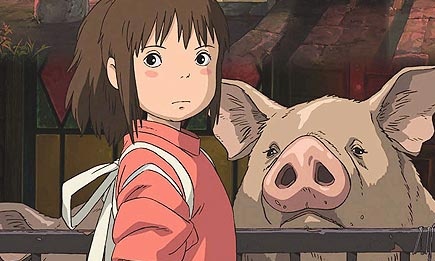Japanese animation is the envy of the globe. From Pixar to Aardman, studios the world over ape its dazzling variety and astonishing creativity. Yet it also finds itself at a crossroad. Now master director Hayao Miyazaki has left the stage, where will the next Japanimation genius going to come from? As it turns out, the country’s most exciting works aren’t coming out of Disney-sized production powerhouses such as Miyazaki’s Studio Ghibli, but from a desk underneath a bunk bed at a family home in Kyoto.
This auteur goes by the mononym Ujicha – named after the distinctive green tea grown in the fields near Uji, Kyoto, where he grew up. And, like the verdant plantations that were the backdrop to his childhood, Ujicha’s work, too, is rich with the kind of warm, bright tones you might find on the cover of a children’s storybook. With up to 3,000 lovingly illustrated, hand-sized props crafted by hand for both of his two feature films, his work is certainly painstaking. But it’s the unique, hybrid animation style that is unlike anything else out there.
A rough guiding point might be the stop-motion, cutout animation of Monty Python or early South Park, but Ujicha’s style goes much further. With a penchant for pocket-size wildlife photography (“I really do like insects,” he says over Zoom), it’s clear where his influences lie. Ujicha’s cardboard miniatures are filmed in real time (on a store-bought FujiFilm camera) and moved by hand across richly textured backdrops. Like a cross between a Punch and Judy puppet show and a children’s pop-up book, these productions boast real dynamism, as fire, water, light and smoke collide with cardboard, creating the kind of theatrics usually reserved for live-action cinema.
Ujicha explains that “gekimation” – derived from the Japanese word gekiga, used to describe adult-aimed manga – started in 1976, a decade before the thirtysomething Kyoto Saga Art University graduate was born, with a TV series called Cat-Eyed Boy. “They wanted to do something different,” he says. But aside from a handful of music videos (such as Denki Groove’s 2008 single Mononoke Dance), the style fell into obscurity. “It was just forgotten about,” Ujicha says. “I wanted to revive it.”
At first glance, Ujicha’s films may resemble childlike fantasies, but The Famous Five they are not. The Burning Buddha Man and Violence Voyager offer something wholly more disturbing. They are visceral, Lovecraftian stories built on grotesque Cronenbergian body horror, whose discomfiting feeling is enhanced by the hybrid animation style. As the trailer for the former suggests, they combine “art” and “nightmare”.
The Burning Buddha Man claims to be the first feature-length gekimation film, taking three years to complete. It is a bizarre, beautiful fantasy in which Buddha statues are given an HR Giger-esque makeover, as Cthulhu-like demons wreak havoc in Kyoto. The film won the excellence award at the Japan Media Arts festival in 2013, but it was with follow-up Violence Voyager that Ujicha staked his claim as a creative force.
Inspired by Jurassic Park and Edogawa Ranpo’s The Strange Tale of Panorama Island, Violence Voyager follows schoolboy Bobby and his cat Derrick on a whimsical adventure into the wilderness, where they stumble on a strange amusement park that seems to be responsible for a number of disappearances. What initially feels like The Goonies soon takes a more sinister turn, as malformed mutants and formidable combat robots begin melting the flesh of innocent children, in a grotesque hybrid of Westworld and The Fly. It’s a mashup of all the things he enjoyed in his childhood, says the director, from trips to Universal Studios Japan to horror movies by Lucio Fulci, John Carpenter and Tobe Hooper, to the gory zombie violence of the Resident Evil video game. The amusement-park-gone-awry scenario is a perfect fit for the strange world of gekimation. “It’s like I’m making an attraction myself,” Ujicha says. “Using my own supplies, and my childhood experiences.”
Ujicha is working on his third full-length gekimation feature (“It’s going to take another three or four years,” he says) but he is not planning to alter his working methods or his rich fantasy worlds. “I’ve left my parents’ home and moved into an even tinier place now,” he jokes. With the backing of major production house Yoshimoto Kogyo, Ujicha may well be on the verge of a mainstream breakthrough.
“Gekimation has not been well known in Japan,” says Violence Voyager producer Kimitsugu Ueno. “But with Ujicha, it will only become more popular – and I’m really looking forward to seeing that.”
• The Weird and Wonderful World of Ujicha is released on Blu-ray on 25 January.










